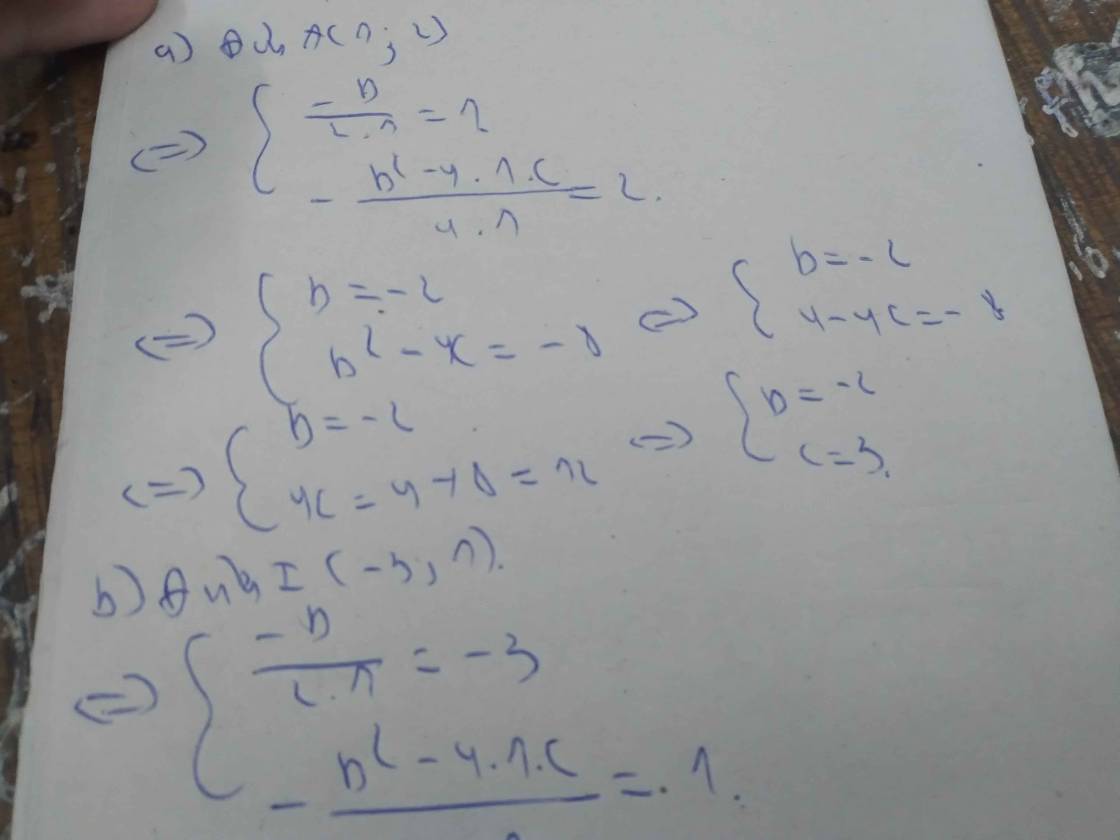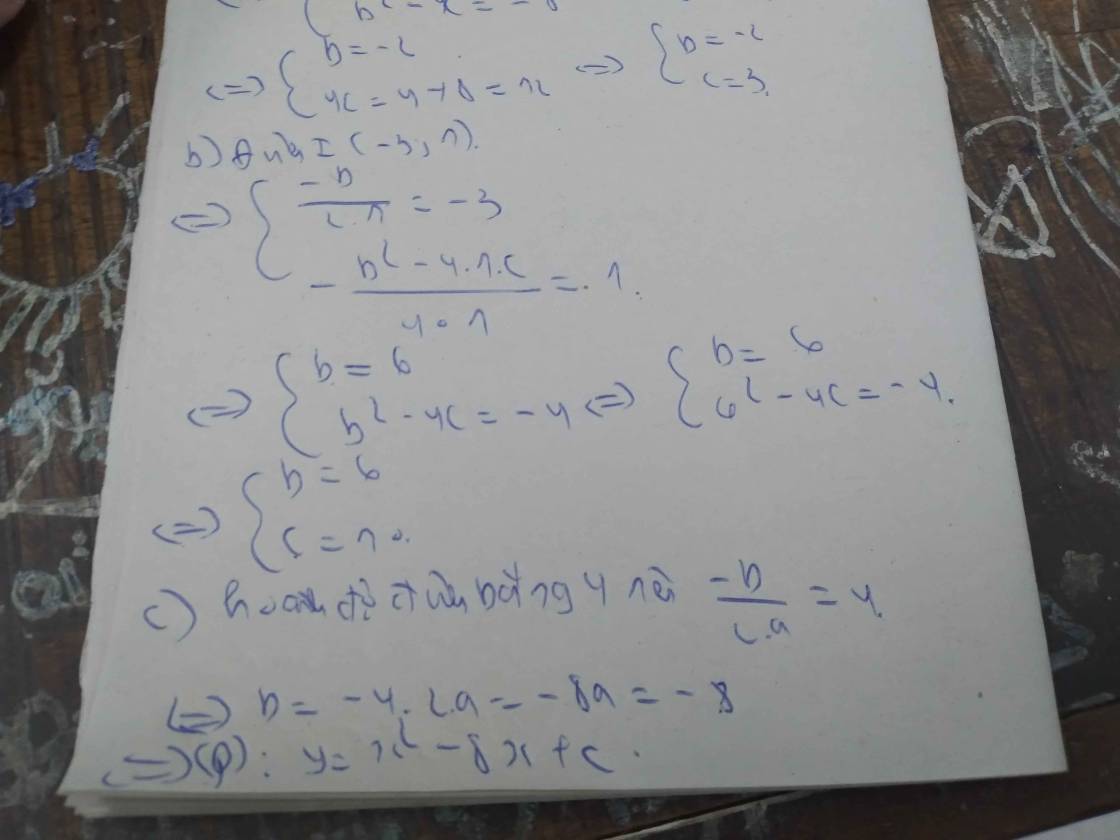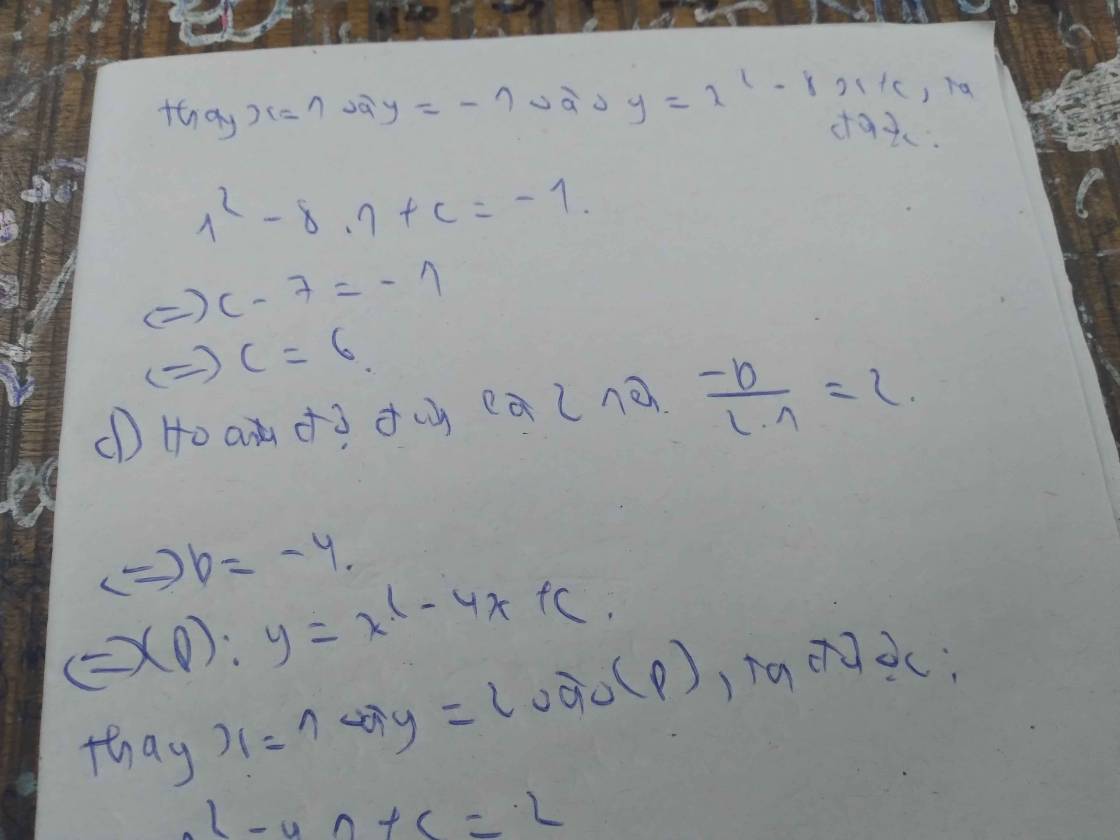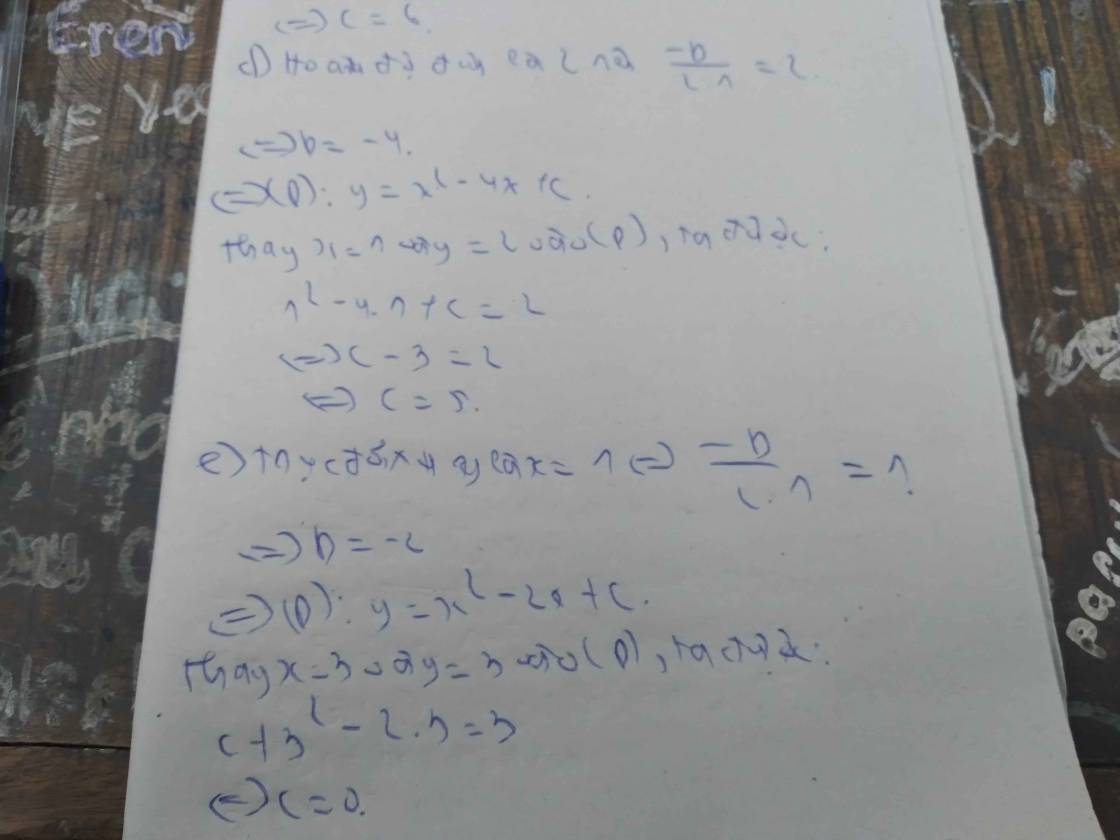Hãy nhập câu hỏi của bạn vào đây, nếu là tài khoản VIP, bạn sẽ được ưu tiên trả lời.

38.
Gọi I là trung điểm AB và G là trọng tâm tam giác ABC
\(\Rightarrow\left\{{}\begin{matrix}\overrightarrow{MA}+\overrightarrow{MB}=2\overrightarrow{MI}\\\overrightarrow{GA}+\overrightarrow{GB}+\overrightarrow{GC}=\overrightarrow{0}\end{matrix}\right.\)
\(3\left|\overrightarrow{MA}+\overrightarrow{MB}\right|=2\left|\overrightarrow{MA}+\overrightarrow{MB}+\overrightarrow{MC}\right|\)
\(\Leftrightarrow3.\left|2\overrightarrow{MI}\right|=3\left|\overrightarrow{MG}+\overrightarrow{GA}+\overrightarrow{MG}+\overrightarrow{GB}+\overrightarrow{MG}+\overrightarrow{GC}\right|\)
\(\Leftrightarrow6\left|\overrightarrow{MI}\right|=2.\left|3\overrightarrow{MG}\right|\)
\(\Leftrightarrow6\left|\overrightarrow{MI}\right|=6\left|\overrightarrow{MG}\right|\)
\(\Leftrightarrow\left|\overrightarrow{MI}\right|=\left|\overrightarrow{MG}\right|\)
\(\Leftrightarrow MI=MG\)
\(\Rightarrow\) Tập hợp M là đường trung trực của đoạn thẳng IG

a) \(MA^2+MB^2=MC^2\)
\(\Leftrightarrow {\left( {x - 1} \right)^2} + {\left( {y - 2} \right)^2} + {\left( {x + 3} \right)^2} + {\left( {y - 1} \right)^2} = {\left( {x - 4} \right)^2} + {\left( {y + 2} \right)^2}\)
\(\Leftrightarrow {x^2} + {y^2} + 12x - 10y - 5 = 0\)
\(\Leftrightarrow {\left( {x + 6} \right)^2} + {\left( {y - 5} \right)^2} = 66\)
Vậy tập hợp các điểm M là một đường tròn.
b) Tâm là điểm (-6 ; 5) bán kính bằng \(\sqrt{66}\)

Câu 1:
Vì \(\overrightarrow{BA}\uparrow\uparrow\overrightarrow{CD}\) và \(BA=\frac{1}{3}CD\Rightarrow \overrightarrow{BA}=\frac{1}{3}\overrightarrow{CD}\)
Để $B,M,D$ thẳng hàng \(\Leftrightarrow \exists k\in\mathbb{R}|\overrightarrow{BM}=k\overrightarrow{MD}\)
\(\Leftrightarrow \overrightarrow{BA}+\overrightarrow{AM}=k\overrightarrow{MD}\)
\(\Leftrightarrow \frac{1}{3}\overrightarrow{CD}+x\overrightarrow{MC}=k\overrightarrow{MD}\)
\(\Leftrightarrow \frac{1}{3}(\overrightarrow{MC}+\overrightarrow{CD})+(x-\frac{1}{3})\overrightarrow{MC}=k\overrightarrow{MD}\)
\(\Leftrightarrow \frac{1}{3}\overrightarrow{MD}+(x-\frac{1}{3})\overrightarrow{MC}=k\overrightarrow{MD}\)
\(\Leftrightarrow (x-\frac{1}{3})\overrightarrow{MC}=(k-\frac{1}{3})\overrightarrow{MD}\)
Vì \(\overrightarrow{MC}; \overrightarrow{MD}\) không phải 2 vecto cùng phương nên điều trên chỉ xảy ra khi \(x-\frac{1}{3}=k-\frac{1}{3}=0\Rightarrow x=\frac{1}{3}\)
Bài 2:
Lấy điểm $I(a,b)$ sao cho \(\overrightarrow{IA}-2\overrightarrow{IB}+3\overrightarrow{IC}=\overrightarrow{0}\)
\(\Leftrightarrow (1-a, 1-b)-2(4-a, 3-b)+3(2-a, -2-b)=(0,0)\)
\(\Leftrightarrow (-1-2a,-11-2b)=(0,0)\Rightarrow a=-\frac{1}{2}; b=\frac{-11}{2}\)
Vậy \(I(-\frac{1}{2}; -\frac{11}{2})\)
Ta có:
\(|\overrightarrow{MA}-2\overrightarrow{MB}+3\overrightarrow{MC}|=|\overrightarrow{MI}+\overrightarrow{IA}-2(\overrightarrow{MI}+\overrightarrow{IB})+3(\overrightarrow{MI}+\overrightarrow{IC})|\)
\(|2\overrightarrow{MI}+(\overrightarrow{IA}-2\overrightarrow{IB}+3\overrightarrow{IC})|=2|\overrightarrow{MI}|\)
Để \(|\overrightarrow{MA}-2\overrightarrow{MB}+3\overrightarrow{MC}|\) min thì \(|\overrightarrow{MI}|\) min. Điều này xảy ra khi $M$ là hình chiếu của $I$ trên $Ox$
Do đó \(M=(-\frac{1}{2};0)\)

a: Vì (P) đi qua A(0;1); B(1;2); C(3;-1) nên ta có hệ phương trình:
\(\left\{{}\begin{matrix}a\cdot0^2+b\cdot0+c=1\\a\cdot1^2+b\cdot1+c=2\\a\cdot3^2+b\cdot3+c=-1\end{matrix}\right.\)
=>\(\left\{{}\begin{matrix}c=1\\a+b+1=2\\9a+3b+1=-1\end{matrix}\right.\Leftrightarrow\left\{{}\begin{matrix}c=1\\a+b=1\\9a+3b=-2\end{matrix}\right.\)
=>\(\left\{{}\begin{matrix}c=1\\9a+9b=9\\9a+3b=-2\end{matrix}\right.\Leftrightarrow\left\{{}\begin{matrix}c=1\\6b=11\\a+b=1\end{matrix}\right.\)
=>\(\left\{{}\begin{matrix}c=1\\b=\dfrac{11}{6}\\a=1-\dfrac{11}{6}=-\dfrac{5}{6}\end{matrix}\right.\)
b: Vì (P) đi qua M(0;-1); N(1;0) và P(2;3) nên ta có hệ phương trình:
\(\left\{{}\begin{matrix}a\cdot0^2+b\cdot0+c=-1\\a\cdot1^2+b\cdot1+c=0\\a\cdot2^2+b\cdot2+c=3\end{matrix}\right.\)
=>\(\left\{{}\begin{matrix}c=-1\\a+b-1=0\\4a+2b-1=3\end{matrix}\right.\Leftrightarrow\left\{{}\begin{matrix}c=-1\\a+b=1\\4a+2b=4\end{matrix}\right.\)
=>\(\left\{{}\begin{matrix}c=-1\\a+b=1\\2a+b=2\end{matrix}\right.\Leftrightarrow\left\{{}\begin{matrix}c=-1\\-a=-1\\a+b=1\end{matrix}\right.\Leftrightarrow\left\{{}\begin{matrix}c=-1\\a=1\\b=0\end{matrix}\right.\)
c: Vì (P) đi qua M(1;-2); N(0;4); P(2;1) nên ta có hệ phương trình:
\(\left\{{}\begin{matrix}a\cdot1^2+b\cdot1+c=-2\\a\cdot0^2+b\cdot0+c=4\\a\cdot2^2+b\cdot2+c=1\end{matrix}\right.\)
=>\(\left\{{}\begin{matrix}a+b+c=-2\\c=4\\4a+2b+c=1\end{matrix}\right.\Leftrightarrow\left\{{}\begin{matrix}c=4\\a+b=-2-c=-6\\4a+2b=1-4=-3\end{matrix}\right.\)
=>\(\left\{{}\begin{matrix}c=4\\4a+4b=-24\\4a+2b=-3\end{matrix}\right.\Leftrightarrow\left\{{}\begin{matrix}c=4\\2b=-21\\a+b=-6\end{matrix}\right.\)
=>\(\left\{{}\begin{matrix}c=4\\b=-\dfrac{21}{2}\\a=-6-b=-6+\dfrac{21}{2}=\dfrac{9}{2}\end{matrix}\right.\)
d: Hoành độ đỉnh là 2 nên -b/2a=2
=>b=-4a(1)
Thay x=3 và y=1 vào (P), ta được:
\(a\cdot3^2+b\cdot3+c=1\)
=>\(9a+3b+c=1\left(2\right)\)
Thay x=-1 và y=2 vào (P), ta được:
\(a\cdot\left(-1\right)^2+b\left(-1\right)+c=2\)
=>a-b+c=2(3)
Từ (1),(2),(3), ta có hệ phương trình:
\(\left\{{}\begin{matrix}b=-4a\\9a+3b+c=1\\a-b+c=2\end{matrix}\right.\Leftrightarrow\left\{{}\begin{matrix}b=-4a\\9a-12a+c=1\\a+4a+c=2\end{matrix}\right.\)
=>\(\left\{{}\begin{matrix}b=-4a\\-3a+c=1\\5a+c=2\end{matrix}\right.\Leftrightarrow\left\{{}\begin{matrix}b=-4a\\-8a=-1\\5a+c=2\end{matrix}\right.\)
=>\(\left\{{}\begin{matrix}a=\dfrac{1}{8}\\b=-4\cdot\dfrac{1}{8}=-\dfrac{1}{2}\\c=2-5a=2-\dfrac{5}{8}=\dfrac{11}{8}\end{matrix}\right.\)

Bài 2:
D thuộc trục Ox nên D(x;0)
\(\overrightarrow{AB}=\left(-9;3\right)\)
\(\overrightarrow{AD}=\left(x-6;-3\right)\)
Để A,B,D thẳng hàng thì \(\dfrac{x-6}{-9}=\dfrac{-3}{3}=-1\)
=>x-6=1
=>x=7

Đặt \(\overrightarrow{PB}=x\overrightarrow{BC}\)
\(\overrightarrow{PM}=\overrightarrow{PB}+\overrightarrow{BM}=x.\overrightarrow{BC}-\dfrac{1}{3}\overrightarrow{AB}\)
\(\overrightarrow{PN}=\overrightarrow{PC}+\overrightarrow{CN}=\left(x+1\right)\overrightarrow{BC}-\dfrac{1}{2}\overrightarrow{AC}=\left(x+1\right)\overrightarrow{BC}-\dfrac{1}{2}\left(\overrightarrow{AB}+\overrightarrow{BC}\right)\)
\(=\left(x+\dfrac{1}{2}\right)\overrightarrow{BC}-\dfrac{1}{2}\overrightarrow{AB}\)
P, M, N thẳng hàng \(\Rightarrow\dfrac{x+\dfrac{1}{2}}{x}=\dfrac{\dfrac{1}{2}}{\dfrac{1}{3}}\Rightarrow x=1\) \(\Rightarrow\overrightarrow{PB}=\overrightarrow{BC}\)
\(\Rightarrow\) B là trung điểm PC \(\Rightarrow P\left(-6;5\right)\)
Nếu bạn chưa học bài pt đường thẳng thì làm cách trên, còn học rồi thì đơn giản là thiết lập 2 pt đường thẳng BC và MN là xong



